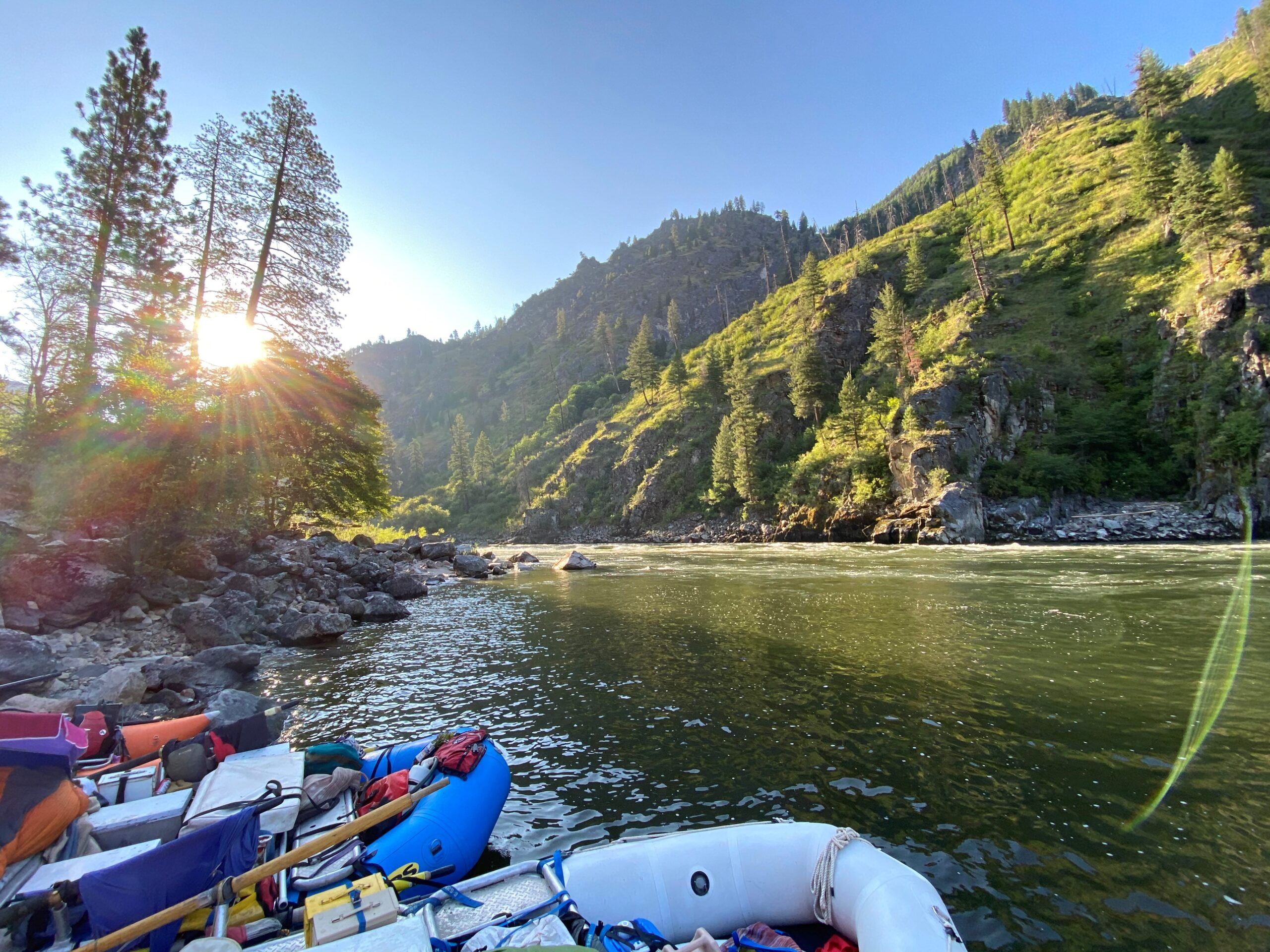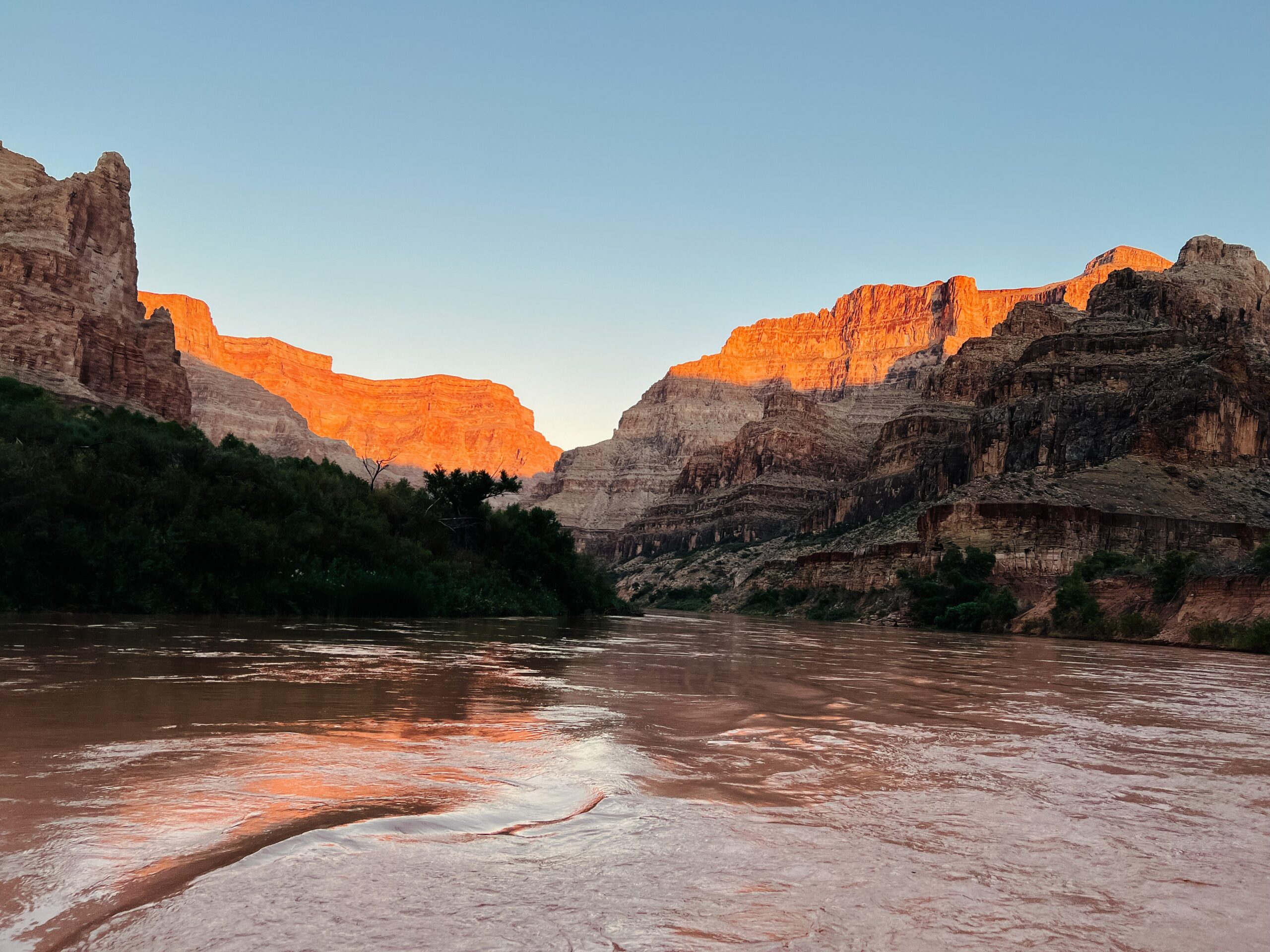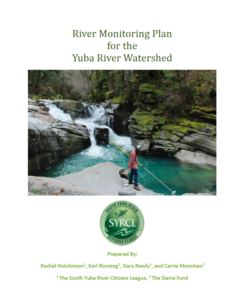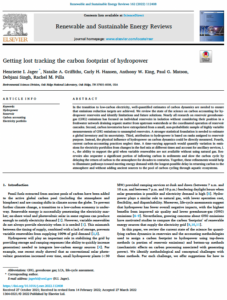Monthly Newsletter: Happy National Rivers Month!

Take a moment to think about the earliest memory you have of a river. Where were you and what were you doing? Were you swimming, paddling, or perhaps casting your first fishing line? We might not remember what we were wearing or who we were with, but at some point in our life, we all have been transformed by rivers—their power, their beauty, and their ability to connect us to our past and sustain our future. In June, we celebrate our connections and memories by observing National Rivers Month. Across the country, from the Kennebec to the Klamath, the Wailua to the Yukon, thousands of people are deepening their connection to rivers and giving back by volunteering at river cleanups, attending art and music events, and joining together to collectively speak up for these vital resources that are often taken for granted. See, rivers not only provide spiritual and cultural connections, they provide life. Life not only for humans but also for animals, insects, and plants. At their core, rivers are meant to be free-flowing, absent of barriers that hinder their course. Alter the flow of a river, say by constructing a dam on it, and life in and around it will change. This includes affecting microscopic nutrients in the soil and water all the way up the food chain past fish, eagles, and bears eventually to us. A dam’s impact can be far-reaching, and once river connectivity is disrupted, restoring what once was rarely returns what is already there.
But what is there that’s worth protecting? For starters, a free-flowing river supports an immense amount of biodiversity, us included, in a variety of ecosystems. A river’s aquatic and riparian habitats are home to thousands of species that live everywhere from in the currents and the eddies to the floodplains and the wetlands. These ecosystems thrive when water flows naturally through each system depositing nutrients and sediments and flushing harmful contaminants away. And the miracle of this exchange is it promotes healthier water for us to drink, creates healthier soils to grow our fruits and vegetables in, and cleaner tidal flats where our seafood is harvested. Yes, as remote as some rivers might seem, free-flowing inland waters play a large part in sustaining estuary and ocean health.
 Not everyone thinks about how the millions of fish that migrate from the ocean into our rivers to spawn are also caught and used as bait for the fish we consume. Indigenous peoples have relied on these waterways for sustenance for time in memorial. They consider fish, including salmon, trout, and herring, to be medicine—but that medicine needs to be free of the harmful contaminants that lurk in the water in order to eat. Migratory fish runs are sacred to these people and as more and more fish are poisoned or barred from reaching their spawning grounds, their population will continue to dwindle. The loss of a species is the loss of Indigenous peoples’ ancestral culture and identity, never to return again.
Not everyone thinks about how the millions of fish that migrate from the ocean into our rivers to spawn are also caught and used as bait for the fish we consume. Indigenous peoples have relied on these waterways for sustenance for time in memorial. They consider fish, including salmon, trout, and herring, to be medicine—but that medicine needs to be free of the harmful contaminants that lurk in the water in order to eat. Migratory fish runs are sacred to these people and as more and more fish are poisoned or barred from reaching their spawning grounds, their population will continue to dwindle. The loss of a species is the loss of Indigenous peoples’ ancestral culture and identity, never to return again.
During this celebratory month, when many of us will spend a lot of time cooling off in our favorite river, think about how much we depend on them for drinking water and food, recreational opportunities, and supporting our local economy. Think about if future generations don’t have the same access to the river resources that we do. What will happen? It’s a question we all should be motivated to answer, including policy makers and dam owners. And yet the longer dams, especially outdated, inefficiently run hydroelectric dams, are left on the landscape, the greater the impact.
Dams harm people and the environment in numerous ways, and they will continue to until action is taken to remove or update them. Although advancements in technology have grown exponentially, many dams dating back to the 20th century haven’t benefited from this progress. This leaves communities and the environment to pay the price. Poor water quality, climate change, and the collapse of entire ecosystems was not on the minds of the hydropower dam engineers who installed these barriers. They weren’t concerned about Indigenous tribes losing their ceremonial hunting and fishing grounds or the contamination of their food. It was all about power generation at any cost—fast forward to 2024 and that cost is still felt today.

The water that backs up in dam impoundments, or reservoirs, typically warms up faster than moving water, lowering dissolved oxygen levels and making it harder for fish to survive and easier for bacteria to bloom. During the warmer months of the year, cold water fish seek cooler spots in the river called thermal refuges to regulate their temperature. By blocking this access, dams greatly increase the stress fish and insects already have to endure from habitat loss, disease, and fishing pressures. But there’s more: Over time, as organic materials—leaves, plants, and wood—accumulate and decompose in the reservoirs, the water can emit potent greenhouse gasses (GHG), including methane, which has 80 times the warming power of carbon dioxide over a 20-year lifespan and thus accelerates climate change. Methane is responsible for about 30 percent of global warming since the Industrial Revolution, according to the International Energy Agency, and tracking emissions from reservoirs is complicated and highly variable due to how each dam is managed. The energy generation technology that turns a dammed reservoir into a power source can contribute to the methane emissions of the reservoir in a variety of ways, says Kelly Catlett, American River’s Hydropower Reform Program Director. The turbines release methane that is dissolved in the water and ultimately increase GHG emissions. In addition, hydropower operations can dramatically raise and lower reservoir levels, exposing sediments, which releases methane, Catlett notes. In the U.S., there are currently no policies requiring the assessment and reporting of reservoir emissions. Environmental groups, including Hydropower Reform Coalition [OK?], are pushing to include hydropower reservoirs in its Greenhouse Gas Reporting Program, which requires reporting of greenhouse gas data from large emission sources, fuel and industrial gas suppliers, and CO2 injection sites in the United States. With more dams planned for construction worldwide, accurate emissions tracking is essential for informed decision-making about the future of hydropower and its role in climate strategy.
As National Rivers Month wraps up in the next week, we can build off this unified momentum and continue to be the voice for the many watersheds that were once connected and are now fragmented by aging, inefficiently run dams. Rivers belong to everyone—Indigenous tribes, towns, cities, and future generations—not power companies. We all deserve the right to paddle, fish, and drink clean water, and we can’t wait to take action because it’s when these life-giving connections are restored in rivers, our lives, our communities, and the environment will be restored as well.


